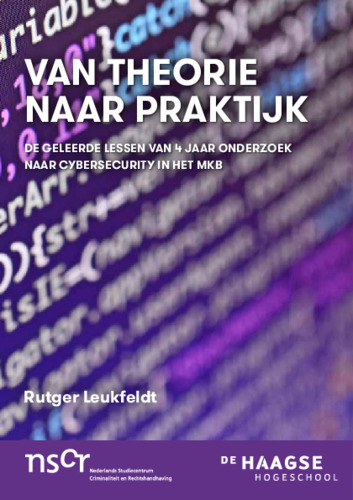- Home >
- Services >
- Access to Knowledge >
- Trend Monitor >
- Source of threat >
- Trend snippet: Cyber resilience for SME's
Trends in Security Information
The HSD Trendmonitor is designed to provide access to relevant content on various subjects in the safety and security domain, to identify relevant developments and to connect knowledge and organisations. The safety and security domain encompasses a vast number of subjects. Four relevant taxonomies (type of threat or opportunity, victim, source of threat and domain of application) have been constructed in order to visualize all of these subjects. The taxonomies and related category descriptions have been carefully composed according to other taxonomies, European and international standards and our own expertise.
In order to identify safety and security related trends, relevant reports and HSD news articles are continuously scanned, analysed and classified by hand according to the four taxonomies. This results in a wide array of observations, which we call ‘Trend Snippets’. Multiple Trend Snippets combined can provide insights into safety and security trends. The size of the circles shows the relative weight of the topic, the filters can be used to further select the most relevant content for you. If you have an addition, question or remark, drop us a line at info@securitydelta.nl.
visible on larger screens only
Please expand your browser window.
Or enjoy this interactive application on your desktop or laptop.
Cyber resilience for SME's
crime and recover quickly from a cyber crisis. The report investigated how SMEs in the metals sector organize their cyber-security and related security measures and how this process can be improved. It turns out that the companies surveyed are fully digitized and dependent on ICT for their primary process. The implementation and maintenance of this ICT is outsourced to external ICT suppliers. Many directors also (partially) outsource security to these ICT suppliers. As a result, these ICT suppliers implement generic technical measures without specifically looking at the organization in question and its risks. Crucial measures aimed at the organization of the company and the behavior of personnel are then often omitted.
This study shows that there is room for improvement. Given that the participating organizations do not actually use a risk model at all, the development of a simple-to-use risk model is already a great gain. With such a model, SMEs can improve the process by which they steer cybersecurity. For example, SME metal companies can use this model to analyze their cyber-security context and, if necessary, improve it by using cyber-security risk management. To date, this is hardly done in the participating companies.




